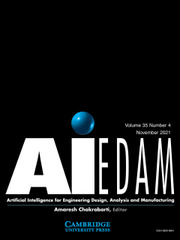Article contents
Considering multiscale scenes to elucidate problems encumbering three-dimensional intellection and navigation
Published online by Cambridge University Press: 12 October 2011
Abstract
Virtual three-dimensional (3-D) environments have become pervasive tools in a number of professional and recreational tasks. However, interacting with these environments can be challenging for users, especially as these environments increase in complexity and scale. In this paper, we argue that the design of 3-D interaction techniques is an ill-defined problem. This claim is elucidated through the context of data-rich and geometrically complex multiscale virtual 3-D environments, where unexpected factors can encumber intellection and navigation. We develop an abstract model to guide our discussion, which illustrates the cyclic relationship of understanding and navigating; a relationship that supports the iterative refinement of a consistent mental representation of the virtual environment. Finally, we highlight strategies to support the design of interactions in multiscale virtual environments, and propose general categories of research focus.
Information
- Type
- Special Issue Articles
- Information
- AI EDAM , Volume 25 , Issue 4: Representing and Reasoning About Three-Dimensional Space , November 2011 , pp. 393 - 407
- Copyright
- Copyright © Cambridge University Press 2011
References
REFERENCES
- 6
- Cited by

